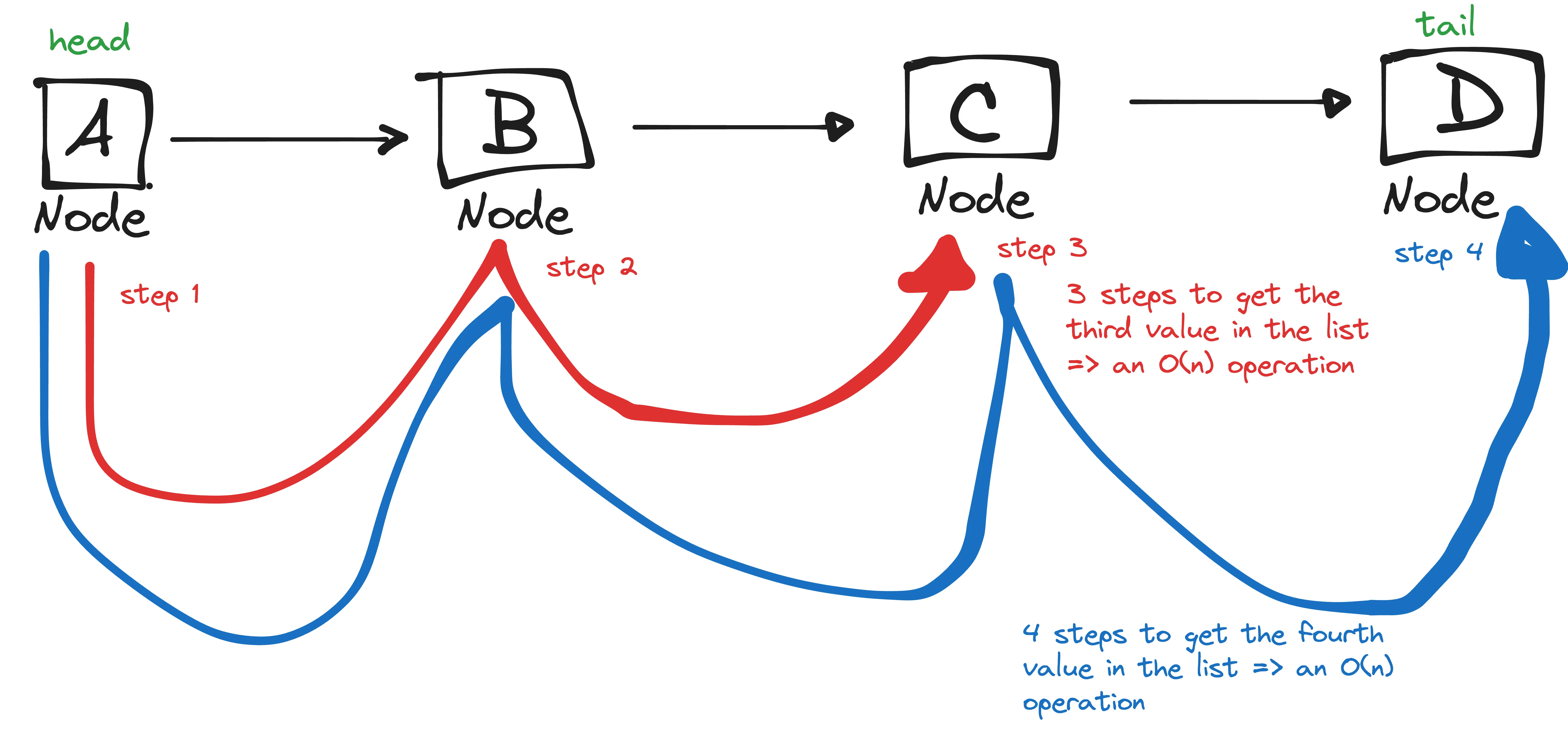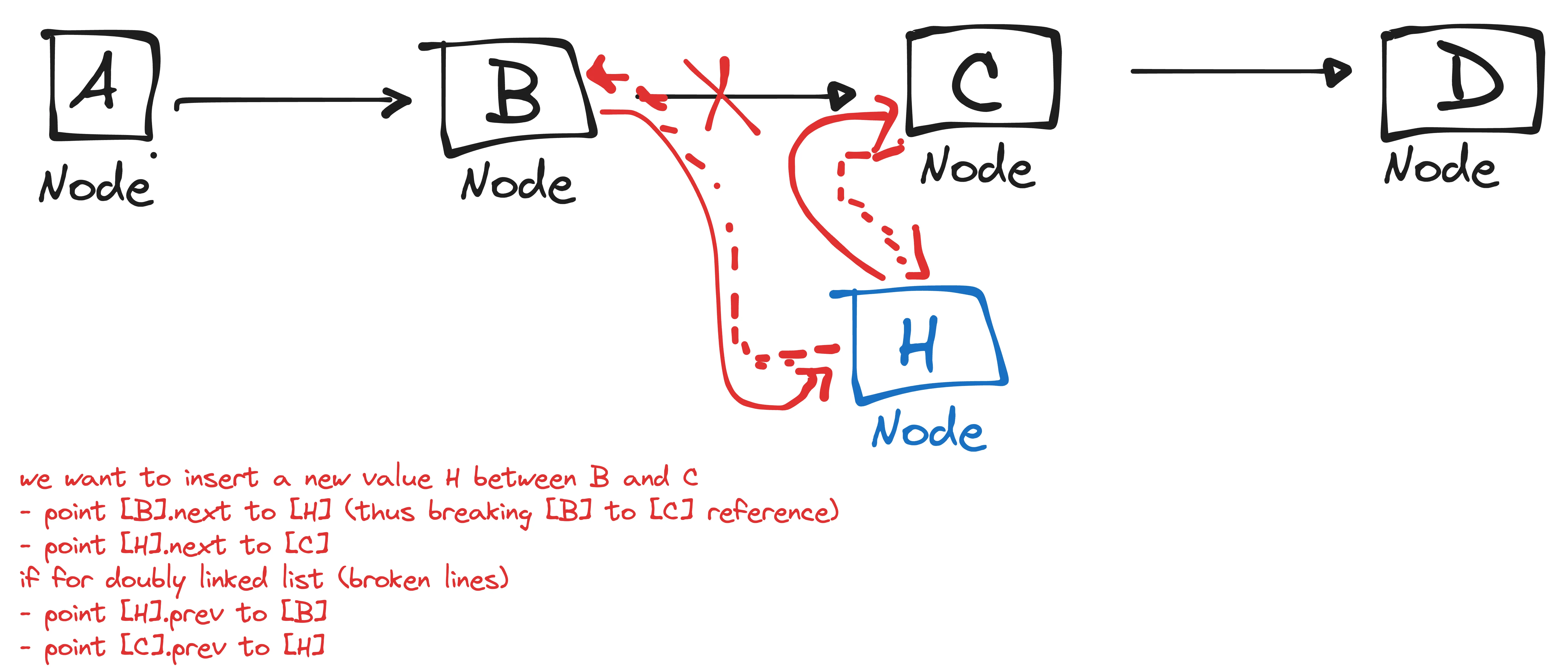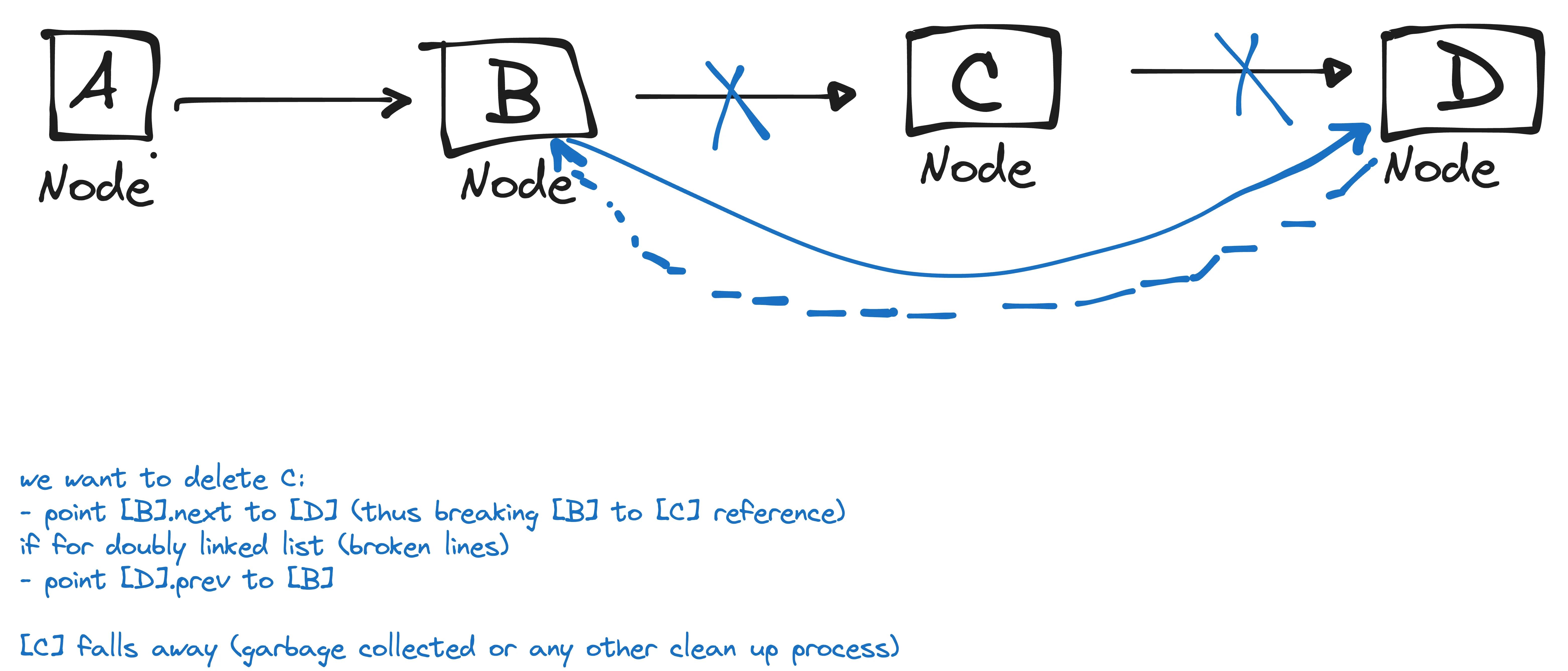Table of contents
Open Table of contents
What is the linked list data structure?
A linked list is a data structure that stores a sequence of elements called nodes. Each node contains a value and can may include a reference to the next node and/or previous node in the sequence.
A linked list can be singly or doubly linked list.

Nodes are containers that contain a value of type T and a reference to another node.
A node can be represented as:
// singly linked list
// where T is a generic type
type Node[T any] struct {
value T
next *Node[T]
}The first node is called head and the last node is called tail.
Unlike an array, a linked list does not use indexes to access elements. Instead, you have access to nodes, and you must traverse the list sequentially to reach the value you need.
// Doubly linked list:
type Node[T any] struct {
value T
next *Node[T]
prev *Node[T]
}
Operations in linked list
For each operation, we will consider both singly and doubly linked lists. Some operations might seem straightforward, but the implementation can be tricky as you have to take into account the references to either the next node or the previous node.
Retrieving values
To get a value from a linked list, we have to traverse the list to reach that value. If we want to get the value from the second node, we have to take two steps to reach the second node. This is true for both types of linked lists.

Inserting new values
Inserting a new value into a linked list can be broken down into two steps:
- Traversing to the point of insertion - an O(n) operation
- Performing the insertion process itself - our focus
Assuming we are at the point of insertion, we want to insert new node that contains a value [H] in between two nodes, let’s say [B] and [C].
we take [B].next (which is currently pointing to [C]) and point [B].next to [H]. And we take [H].next (which is currently nil/undefined) and point it to [C].
If our linked list is a doubly linked list, we also have to update the .prevs of all participating nodes.

These actions with the .nexts and .prevs are independent of the list size or size of the node or its value and thus is a O(1) operation.
Deletion of values
